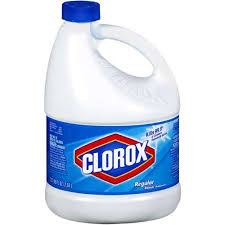Removing Mold
Exposure to high mold spore levels can cause the development of an allergy to mold. People can react negatively to mold whether it is living or dead. Care should be taken to minimize exposure to and reduce mold in and around the house. There is a common misconception that Using Bleach To Remove Mold will work in ALL situations. It will not!
The easiest way to explain if you have mold growing on or in your house is this way; “If you can smell a musty odor or see mold, you have a mold growing”
Where Mold Lives
Mold often grows on books, paper, cardboard, under cabinets, behind baseboards, inside walls, in carpets, carpet padding. Mold grows on moist materials, so mold growth is likely in areas wet by water leaks, flooding, damp basements, and humidity levels above about 70 percent.
Using Bleach To Remove Mold – Use on the Correct Surfaces
Bleach works well on non-metallic, non-porous, and hard surfaces. Bleach can kill mold when molds grow on non-porous and hard surfaces.
Flooded basements not completely dried will usually have mold growth. Walls that were wet due to a flood should be opened and rapidly dried to prevent mold growth.
Treating mold on non-porous and hard surfaces is fairly straightforward by using a strong solution of bleach.
Note – wood, drywall, and other pours products should NOT be treated with bleach. Use a chemical
like Sprocidian on those surfaces.
like Sprocidian on those surfaces.
Steps For Using Bleach To Remove Mold
- Before you start cleaning mold with bleach, you need to clean the surface from dust and dirt.
Mix one cup of bleach with a gallon of water. - Spray the solution onto an area of mold and let sit 30 minutes.
- Wear gloves, mask/ventilator, and avoid contact with skin, eyes, or hair.
- Scrub mold area if necessary to remove stubborn areas.
- Use good ventilation.
Subscribe here to receive updates via email
If you enjoyed this post, make sure you subscribe to my RSS feed!

